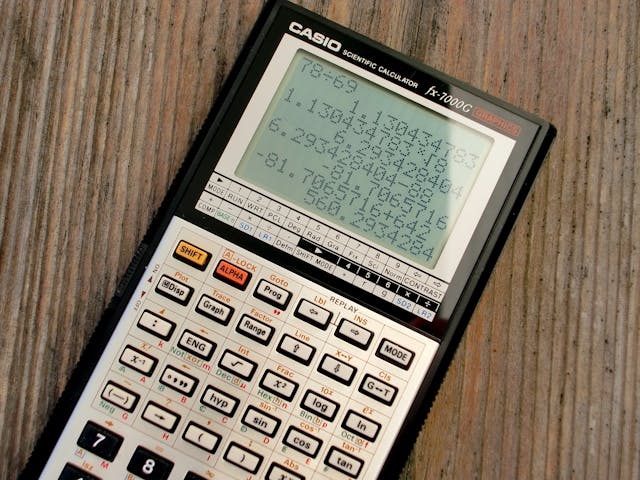

How to measure the ROI of corporate events
How to measure the ROI of corporate events?
Corporate events represent a significant investment of time, resources, and capital. Whether it’s a leadership summit, product launch, training retreat, or client appreciation evening, companies are increasingly expected to prove their value beyond applause and attendance. Yet, measuring return on investment (ROI) in the context of events isn’t as simple as comparing expenses to revenue—it’s about understanding impact. From lead generation to team performance, ROI can be tangible or intangible, short-term or long-term. So how do you accurately measure it?
 The first step is defining your objectives. Every event should begin with a clear understanding of its goals. Are you aiming to boost employee morale, generate new leads, drive product awareness, or foster client relationships? Without concrete objectives, measuring ROI becomes guesswork. Objectives act as the benchmark against which success is evaluated. They should be SMART: specific, measurable, achievable, relevant, and time-bound.
The first step is defining your objectives. Every event should begin with a clear understanding of its goals. Are you aiming to boost employee morale, generate new leads, drive product awareness, or foster client relationships? Without concrete objectives, measuring ROI becomes guesswork. Objectives act as the benchmark against which success is evaluated. They should be SMART: specific, measurable, achievable, relevant, and time-bound.
For companies organizing high-stakes events, working with a specialized partner like Preference Events agency can help ensure that KPIs are integrated into the planning process. From experience design to data capture, agencies bring in-depth knowledge of how to align your experience with outcomes that can be monitored and measured. This ensures that ROI is not an afterthought, but a guiding principle throughout the event lifecycle.
One of the most straightforward ways to measure ROI is through lead generation and client acquisition. For B2B events in particular, track the number of qualified leads gained, follow-up meetings booked, and new accounts opened. Compare these metrics to historical averages or the investment made in securing attendance. If the cost per lead is lower than your average digital marketing spend, you’ve already gained efficiency.
Sales conversion is the next layer. Post-event tracking should assess how many leads from the event convert into paying customers—and how quickly. Use CRM systems to monitor this over 30, 60, or 90 days. For existing clients, measure upsell or renewal rates. Events that foster strong emotional connections often outperform cold outreach or digital campaigns when it comes to closing deals.
Employee-focused events such as training programs, team-building retreats, or internal conferences call for different metrics. Pre- and post-event surveys can gauge changes in employee engagement, knowledge retention, and satisfaction. Look for shifts in productivity, collaboration, or retention over the following months. Happy, informed employees are more likely to stay, contribute, and advocate for your brand.
Brand awareness and perception are more qualitative but still essential. Track media mentions, social media engagement, and website traffic before, during, and after your event. Use sentiment analysis tools to understand how people are talking about your event. Hashtags, shares, and influencer participation are useful indicators of reach and resonance. If your brand message is being amplified, your investment is generating long-tail returns.
For training- or knowledge-based events, consider evaluating learning outcomes through quizzes, certifications, or follow-up assessments. Effective knowledge transfer can be measured through applied performance and improved output. Employees who are better equipped to do their jobs more efficiently provide ongoing value that surpasses the cost of the event.
Feedback is also crucial. Collect real-time input via mobile apps, interactive polls, or surveys at every stage of the event. Net Promoter Score (NPS) is a widely used metric that measures satisfaction and loyalty based on attendees’ willingness to recommend the event. Consistently high NPS scores indicate strong emotional resonance, which correlates with long-term brand affinity and engagement.
Operational ROI should not be overlooked. Did the event stay within budget? Were there any unexpected costs or savings? Track your actual expenses versus projected budgets and analyze which investments yielded the highest returns. Small details—like switching to digital brochures or optimizing catering orders—can add up to significant savings.
To consolidate all this data, develop a post-event report that brings together both quantitative and qualitative insights. Segment the data by stakeholder group (attendees, sponsors, staff, partners) and link each insight back to the original objectives. This document not only supports ROI analysis but also guides future planning and strategic alignment.
Technology plays a major role in making ROI measurable. Use event management software to track engagement, mobile app usage, session attendance, and lead capture. Integrating these tools with your CRM or analytics platforms allows for deeper visibility into long-term results. The more data you collect, the clearer your understanding of what works—and what doesn’t.
ROI is more than a percentage—it’s a narrative. It tells the story of investment, experience, and value. Measuring the ROI of corporate events is not about reducing everything to numbers but about aligning purpose with performance. When planned with intent and assessed with the right tools, corporate events become not just a cost—but a powerful catalyst for growth.

Self-defence tools for women: staying safe in urban environments
In today’s urban environments, safety is a top priority, especially for women. With increasing concerns about personal security, many are turning to self-defence tools to feel safer while navigating cities. These tools not only provide a sense of security but also empower women to take control of their safety in potentially dangerous situations. Whether you’re walking home late at night, commuting to work, or simply running errands, having the right tools can make all the difference.

One of the most effective ways to stay safe is by carrying personal safety devices. Items such as pepper spray, personal alarms, and tactical flashlights are compact, easy to use, and can deter potential threats. For instance, a personal alarm can draw immediate attention in case of an emergency, while pepper spray can incapacitate an attacker, giving you time to escape. These tools are designed to be user-friendly, even for those with no prior self-defence training. Additionally, many of these devices are designed to fit discreetly into a purse or pocket, ensuring they are always within reach when needed.
Another essential tool is the self-defence keychain. These small but powerful devices often come with features like sharp edges or pointed tips, allowing you to defend yourself effectively. They are lightweight and can be easily attached to your keys, making them accessible at all times. Additionally, many self-defence keychains are designed to be discreet, ensuring that they don’t draw unnecessary attention. Some even double as everyday items, such as pens or flashlights, making them a practical addition to your daily carry.
For those looking for a more comprehensive approach to safety, Dekkade offers a range of solutions tailored to urban environments. Their products are designed with both functionality and style in mind, ensuring that you don’t have to compromise on either. Whether you’re commuting to work or walking home late at night, having the right tools can make all the difference. Dekkade’s innovative designs and high-quality materials ensure that their products are not only effective but also durable and reliable.
It’s also important to consider self-defence training alongside these tools. Knowing how to use your devices effectively and understanding basic self-defence techniques can significantly enhance your confidence and ability to protect yourself. Many organisations and community centres offer classes specifically designed for women, focusing on practical skills and situational awareness. These classes often cover topics such as how to de-escalate a confrontation, how to use self-defence tools properly, and how to stay aware of your surroundings in urban settings.
In addition to physical tools, technology can play a crucial role in personal safety. Apps that share your location with trusted contacts or send emergency alerts can provide an extra layer of security. These digital solutions work hand-in-hand with traditional self-defence tools, creating a comprehensive safety plan for urban living. For example, some apps allow you to set up a virtual escort, where a friend or family member can monitor your journey in real-time and be alerted if you don’t arrive at your destination as planned.
When choosing self-defence tools, it’s essential to consider your daily routine and the specific challenges you face. For example, if you frequently use public transportation, a compact and easily accessible device like a personal alarm might be ideal. On the other hand, if you often walk alone at night, a more robust tool like pepper spray could be more suitable. It’s also important to consider the legal regulations in your area, as some self-defence tools may be restricted or require a permit.
Another factor to consider is the psychological impact of carrying self-defence tools. Simply having these devices on hand can provide a significant boost to your confidence, making you feel more in control of your safety. This sense of empowerment can be invaluable, especially in high-stress situations where quick thinking and decisive action are required. Additionally, knowing that you have the means to protect yourself can help reduce anxiety and fear, allowing you to navigate urban environments with greater peace of mind.
Ultimately, the goal is to create a safety strategy that works for you. By combining the right tools, training, and awareness, you can navigate urban environments with greater confidence and peace of mind. Remember, your safety is worth investing in, and there are numerous resources available to help you stay protected. Whether you choose to carry a personal alarm, a self-defence keychain, or a combination of tools, the most important thing is to find what works best for your lifestyle and needs.
In conclusion, staying safe in urban environments requires a proactive approach. By equipping yourself with the right self-defence tools, seeking out training opportunities, and leveraging technology, you can significantly enhance your personal security. Companies like Dekkade are leading the way in providing innovative and stylish solutions that cater to the unique challenges faced by women in urban settings. Take the time to explore your options and invest in your safety—it’s a decision you won’t regret.
The therapeutic benefits of paper crafting
Paper crafting, encompassing a variety of activities such as origami (see origami-shop.com), scrapbooking, and card making, has long been a cherished hobby for many. Recently, there has been growing recognition of its potential therapeutic benefits. Engaging in paper crafting can significantly improve mental health by fostering creativity, providing a sense of accomplishment, and promoting relaxation. In an increasingly fast-paced and digitally dominated world, the tactile and mindful nature of paper crafting offers a refreshing and beneficial escape.

To begin with, the act of creating something tangible from paper can stimulate the brain and enhance cognitive function. When individuals engage in paper crafting, they activate various parts of their brain, including those responsible for fine motor skills, spatial awareness, and problem-solving. This cognitive engagement can be particularly beneficial for older adults, helping to maintain mental sharpness and delay cognitive decline. Additionally, the creative process involved in paper crafting encourages divergent thinking, which is essential for innovation and problem-solving in other areas of life.
Moreover, paper crafting provides a sense of accomplishment and boosts self-esteem. Completing a project, whether it is a meticulously folded origami crane or an intricately designed scrapbook page, gives individuals a tangible representation of their efforts. This sense of achievement can be especially empowering for those struggling with mental health issues, as it offers proof of their capabilities and resilience. Furthermore, sharing completed projects with others, whether through social media or in-person gatherings, can foster a sense of community and validation.
In addition to cognitive and emotional benefits, paper crafting also promotes relaxation and stress relief. The repetitive motions involved in activities like cutting, folding, and gluing can have a meditative effect, helping to calm the mind and reduce anxiety. This is akin to the benefits derived from practices such as mindfulness and meditation, where focus on the present moment alleviates stress. Furthermore, the act of creating something beautiful or meaningful can serve as a form of emotional expression, allowing individuals to process and release pent-up emotions in a healthy manner.
Transitioning to another important aspect, paper crafting can also provide a welcome break from digital screens. In a world where people are increasingly glued to their smartphones, computers, and televisions, engaging in a tactile activity like paper crafting offers a necessary respite. This screen-free time can reduce digital fatigue and eye strain, contributing to overall well-being. Additionally, the analog nature of paper crafting allows for a deeper connection with the materials and the creative process, fostering a sense of mindfulness that is often absent in digital activities.
Furthermore, the social aspects of paper crafting should not be overlooked. Many individuals find joy in participating in crafting groups or workshops, where they can share ideas, techniques, and finished projects. These social interactions can combat feelings of isolation and loneliness, which are prevalent issues in today’s society. Being part of a crafting community can provide emotional support and a sense of belonging, further enhancing the therapeutic benefits of the activity.
In conclusion, the therapeutic benefits of paper crafting are multifaceted, encompassing cognitive stimulation, emotional empowerment, stress relief, digital detoxification, and social connection. As individuals continue to seek ways to improve their mental health and well-being, paper crafting offers a simple yet profound solution. By embracing the creative process and the tangible outcomes it produces, individuals can find solace and joy in the art of paper crafting.

Finding inner peace through daily practices
Finding inner peace is a quest that many embark upon, seeking solace amidst the chaos of daily life. This journey involves integrating certain practices into one’s routine that nurture the mind, body, and soul. Such practices are not just transient activities but lifestyle changes that foster a deeper sense of tranquility and contentment.

Creating a serene and inspiring home environment
Creating a serene and inspiring home environment is an endeavor that brings long-lasting benefits to your well-being. Transforming your living space into a haven of tranquility and creativity requires careful consideration of various elements, from color schemes and lighting to the arrangement of furniture and the integration of natural elements. This article explores practical strategies to help you craft a home environment that promotes peace and inspiration.

Understanding the basics of cognitive psychology
Cognitive psychology delves into understanding how people perceive, think, learn, and remember. It is a branch of psychology that investigates internal mental processes such as problem-solving, memory, and language. By exploring these areas, cognitive psychologists aim to uncover the mechanisms behind human thought and behavior, providing insights into how people process and store information.

Tips for maintaining a balanced and healthy life
Living a balanced and healthy life is essential for overall well-being. Achieving this requires a mindful approach to various aspects of daily life, including physical health, mental health, nutrition, and social interactions. A well-rounded lifestyle can help prevent chronic diseases, enhance mood, and improve the quality of life. Below are some practical tips to guide you in maintaining a balanced and healthy life.

Effective fitness routines for mental clarity
Achieving mental clarity through effective fitness routines is not only possible but also highly beneficial. As our lives become increasingly hectic, maintaining mental sharpness and emotional balance becomes essential. Integrating the right physical activities into your daily routine can have a profound impact on your cognitive functions, emotional well-being, and overall mental health. This article delves into several effective fitness routines that can enhance your mental clarity, providing you with a holistic approach to mental and physical wellness.

Cultural traditions that promote mental well-being
In today’s fast-paced world, cultural traditions play a vital role in promoting mental well-being. Many cultures have developed unique practices that not only celebrate their heritage but also contribute significantly to maintaining mental health. These practices offer a sense of belonging, purpose, and inner peace, which are essential for a balanced life. Let’s explore some of these cultural traditions that have been proven to support mental well-being.

Integrating technology into your mindfulness routine
Mindfulness has long been associated with traditional practices such as meditation, deep breathing, and yoga. As technology advances, integrating these practices with modern tools can enhance and simplify your mindfulness routine. Leveraging technology not only makes mindfulness more accessible but also provides innovative ways to track and improve your mental well-being.
